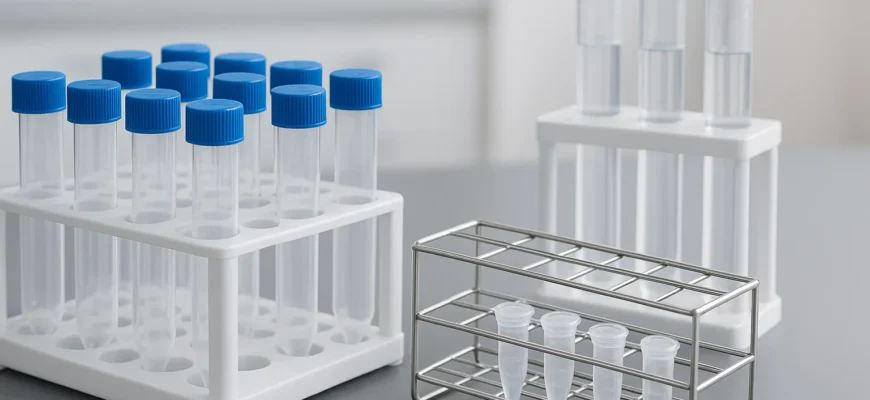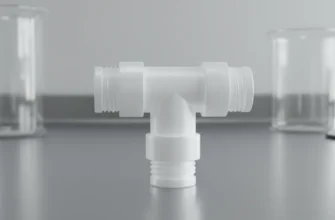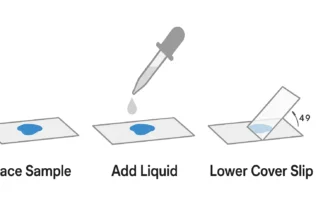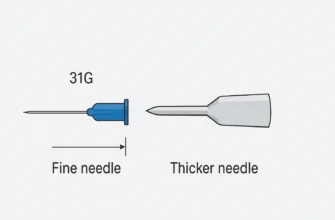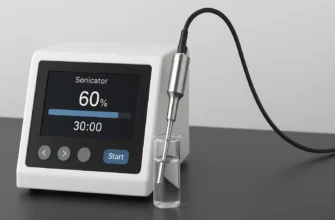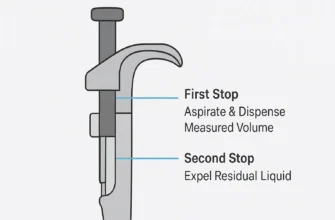Beyond Just Holding Tubes
In any modern laboratory, amidst the hum of advanced machinery and the gleam of complex glassware, two items remain fundamental: the test tube and its indispensable partner, the test tube rack. These simple tools are the bedrock of countless experiments, from routine diagnostics to groundbreaking research. The global laboratory consumables market demonstrates their critical importance, valued at USD 15.8 billion in 2024 and projected to reach USD 26.58 billion by 2030, growing at a CAGR of 8.65%. The test tube rack market specifically, valued at USD 350 million in 2024, is forecast to achieve USD 600 million by 2033, registering a 6.5% CAGR. However, their very ubiquity can lead to oversight. The right combination of test tubes and racks is not a trivial detail—it’s a cornerstone of laboratory efficiency, safety, and organization.
The Unsung Heroes of the Laboratory
At its core, a test tube rack, often called a test tube stand or test tube holder, does more than just hold tubes upright. It is a critical organizational tool that facilitates sample identification, prevents cross-contamination, and ensures the stability of reactions. Whether used for simple storage on a benchtop, incubation in water baths, or organizing samples for high-throughput analysis, these Lab Tube Racks are central to a smooth workflow. A well-chosen rack provides safe transport, secure Storage Stand functionality, and a stable platform for procedures, making it one of the most hardworking pieces of equipment in the research laboratory.
Why This Guide is Essential for Every Lab Professional
Selecting the wrong tube or rack can cascade into significant problems. Disorganization leads to misplaced samples and wasted time. Using an incompatible rack risks spills, breakage, and potential exposure to hazardous materials and laboratory chemicals. Incorrect material choices can lead to degradation during autoclaving or chemical reactions. These seemingly small errors accumulate, resulting in wasted resources, compromised experiments, and safety hazards. This guide cuts through the confusion, providing a clear roadmap for selecting the right tools, ensuring your laboratory operates with precision, safety, and efficiency.
Understanding Your Tubes: The Foundation for Rack Selection
Before you can choose the right test tube supports, you must first understand the containers they are designed to hold. The specifications of your test tubes, vials, and other sample containers directly dictate the type of rack you need.
Common Test Tube Materials
The material of your test tube is chosen based on the application, and it influences everything from chemical resistance to thermal durability.
Glass: Typically made from borosilicate glass, these laboratory tubes offer excellent chemical resistance and can withstand high temperatures up to 820°C softening point, with strain points at 515°C and annealing points at 565°C. They are reusable, transparent, and ideal for a wide range of chemical experiments. Borosilicate glass test tubes are chemically inert, resist pH changes, and prevent contaminant leaching that can occur with soda-lime glass.
Plastic: Plastic test tube racks and tubes are a versatile and often more affordable alternative.
-
Polypropylene (PP): This material is durable, shatterproof, and offers excellent resistance to many common acids, bases, and solvents. It is autoclavable at 121°C for 20 minutes, making it suitable for sterile applications. Polypropylene containers are naturally translucent, lightweight, and chemically resistant.
-
Polystyrene (PS): Polystyrene is optically clear, making it ideal for observational studies. However, it is more brittle than polypropylene and cannot withstand the high temperatures of autoclaving.
Essential Tube Specifications
Matching the rack to the tube’s physical dimensions is critical for stability and functionality. Key specifications to consider include:
Tube Size and Diameter: This is the most crucial factor. Racks are designed with wells of specific diameters to fit common Tube Size options such as 10mm, 13mm, 16mm, 20mm, 25mm, and 30mm. A tube that is too loose can tip over, while one that is too tight can be difficult to remove or may even get stuck.
Volume: The capacity of the tube (e.g., 5 mL, 10 mL, 12 mL, 15 mL, 50 mL) is directly related to its size and length.
Rim Type: Some tubes have a lip or rim, while others are rimless. This can affect how they sit within the rack.
Beyond Standard Test Tubes: Vials and Specialized Tubes
The modern laboratory uses a variety of sample containers beyond the standard test tube. Your selection of Tube Racks must account for these as well.
Microcentrifuge Tubes: These small, conical tubes (e.g., 0.5 mL, 1.5 mL, 2.0 mL) require racks with small, closely spaced wells for high-density storage and processing. 96-WELL Dual-Sided Microcentrifuge Tube Racks accommodate both 0.5 mL and 1.5/2.0 mL tubes in a standard 8 x 12 array format.
Cryogenic Vials: Designed for long-term storage at ultra-low temperatures down to -80°C, these vials require racks made from materials that can withstand extreme cold without becoming brittle, such as polypropylene or polycarbonate.
Transport Vials: These are used for safely moving samples and often require racks that can be securely lidded or contained for convenient storage during transport.
The Art of Selection: Choosing the Right Test Tube Rack
With a clear understanding of your tubes, you can now navigate the selection process for the perfect rack. A systematic approach ensures you consider all critical variables.
Step 1: Assess Your Tubes for Compatibility
The first step is a simple inventory. What are the most common tube sizes and types you use? Measure their diameters and note their material. Choose a rack where the well diameter is slightly larger than your tube diameter for a snug but not restrictive fit. Many racks are designed for a specific Tube Size or range, so check manufacturer specifications carefully. Blood Draw Tube Organizers and Blood Tube Organizer Drawers are specifically designed for clinical phlebotomy applications.
Step 2: Define Your Application and Laboratory Environment
Where and how will the rack be used? The environment dictates the necessary material and design.
General Benchtop Use: A simple Plastic Test Tube Rack or Wire Tube Racks may suffice for basic organization.
Water Baths or Incubators: Racks used in these environments must be resistant to heat and moisture. Polypropylene or epoxy-coated wire racks are excellent choices as they won’t rust or warp. Floating test tube racks are specifically designed to float in water baths, keeping the tops of tubes above the water level while ensuring proper temperature contact.
Freezers/Cold Storage: For Cryogenic Vials, select racks made from polycarbonate or polypropylene rated for low temperatures down to -80°C.
Chemical Procedures: If working with strong acids or solvents, choose a rack with high chemical resistance. Polypropylene Microcentrifuge Tube Rack options, Delrin Tube Racks, and Polyethylene Tube Racks offer superior chemical resistance.
Step 3: Determine Capacity and Workflow Needs
Consider how many samples you process at once. Racks come in a vast array of capacities, from small 12-place racks to high-capacity models holding 90 tubes or more. For high-throughput workflows, consider stackable or modular racks that maximize bench space. Work 2 Store® Expanding Storage Rack systems and fabricated test tube racks can be customized for specific needs. Alphanumeric grids are a crucial feature for large batches, as they simplify sample tracking and reduce the risk of errors.
Step 4: Consider Usability, Ergonomics, and Safety
A rack should be easy and safe to use. Look for features like non-slip feet for stability, wide bases to prevent tipping, and clear visibility of the tubes. Handles can make transport safer and more convenient. For tasks requiring frequent access, consider a design that allows for easy insertion and removal of tubes. The goal is to find a rack that integrates seamlessly into your workflow, enhancing efficiency without compromising safety.
Deep Dive into Test Tube Rack Types & Materials
Test tube racks are available in a variety of materials and designs, each with unique advantages suited to different laboratory tasks. The global test tube racks market growth reflects the diverse needs of modern labs.
Plastic Test Tube Racks: Versatility and Chemical Resistance
Plastic racks are the most common type found in labs today due to their versatility and affordability.
Polypropylene (PP): Lightweight, autoclavable at 121°C, and highly resistant to chemicals. Ideal for a wide range of applications, including incubation and general storage.
Polycarbonate (PC): Known for its strength, transparency, and ability to withstand freezing to autoclaving temperatures. PC is autoclavable and durable at low temperatures, making it suitable for freezer storage.
Acrylic: An Acrylic Test Tube Rack offers exceptional clarity, making it easy to view tube contents. However, acrylic is not autoclavable and has lower chemical resistance than PP.
Polyoxymethylene (POM): Used in custom plastic tube racks, this material can be cleaned with mild detergent, ethanol, or isopropyl alcohol and autoclaved at 121°C.
Wire Tube Racks: Durability and High Visibility
Often made from steel coated with epoxy or vinyl, wire racks are durable and allow for excellent visibility of tube labels and contents. The open design promotes air circulation, which is beneficial for drying tubes. Epoxy coatings provide chemical and corrosion resistance, making them suitable for use in water baths and incubators.
Wooden Test Tube Racks: Traditional and Sturdy
While less common in sterile or chemical-intensive environments, wooden racks offer a classic aesthetic and are sturdy test tube holders for general storage or educational settings. Their primary drawback is their porous nature, which makes them difficult to sterilize effectively.
Specialized Rack Designs for Specific Lab Needs
Beyond material, rack design is tailored for specific functions:
Centrifuge Tube Rack: Specifically designed to hold conical-bottom 15 mL and 50 mL centrifuge tubes securely.
Slant Racks: These hold tubes at a fixed 5° or 20° angle, which is essential for preparing agar slants or for specific incubation protocols.
Floating Racks: Designed to float in water baths, these polypropylene floating racks keep the tops of Microcentrifuge Tubes or other small tubes above the water level while ensuring maximum contact with the water for superior temperature control.
Modular or Interlocking Racks: These offer flexibility, allowing you to connect multiple racks to create a custom workstation. Switch-Grid systems allow quick changes between different tube sizes.
Blood Tube Racks: Blood Tube Organizer Drawers and Blood Draw Tube Organizers feature pull-out drawers and plastic rings to segregate each tube independently, ideal for clinical blood sample storage.
The Pricing Puzzle: Factors Influencing Cost and Value
The cost of test tube racks can vary significantly. Understanding the factors that influence price will help you make a cost-effective decision that doesn’t compromise on quality or safety.
Key Factors Affecting Rack Pricing
Material: High-performance materials like stainless steel or specialized polymers will cost more than standard polypropylene. catalog no. specifications vary by manufacturer and material quality.
Capacity and Size: Larger racks that hold more tubes (40, 60, 90, or 96 wells) are naturally more expensive.
Brand: Reputable brands known for quality control and durable materials may have a higher price point.
Special Features: Features like alphanumeric indexing, interlocking designs, floating capabilities, or reversible dual-sided configurations add to the cost.
Balancing Budget and Quality
For labs on a tight budget, an Economy Test Tube Rack can be an attractive option. These are typically basic plastic or wire racks that perform the core function of holding tubes effectively. However, it’s crucial to ensure they still meet your essential requirements for chemical and temperature resistance. Sacrificing these critical features for a lower price can lead to rack failure, sample loss, and safety risks, ultimately costing more in the long run.
Long-Term Value: Why Initial Cost Isn’t Everything
Investing in a higher-quality rack often provides better long-term value. A durable, well-designed rack will withstand repeated use and autoclaving, reducing the need for frequent replacement. Improved efficiency from features like clear indexing or ergonomic design can save valuable time. The stability and security offered by a superior rack protect your most valuable assets: your samples and your time.
Care, Maintenance, and Longevity of Your Test Tube Racks
Proper care and maintenance will extend the life of your test tube racks and ensure a safe, contamination-free working environment.
Cleaning Protocols for Different Materials
Regular cleaning is essential for all laboratory equipment. For Plastic Test Tube Rack and coated Wire Tube Racks, use a mild detergent and warm water. Remove all test tubes first and wash them separately. Rinse the rack thoroughly under running water to remove any soap residues. For stubborn residues, test tube brushes can be used inside the wells. Avoid abrasive cleaners that can scratch surfaces. Always check the manufacturer’s guidelines for chemical compatibility before using harsh cleaning agents or solvents. If the rack is autoclavable, follow the recommended time and temperature settings (typically 121°C for 20 minutes).
Proper Storage Practices
When not in use, store racks in a clean, dry area away from direct sunlight, which can degrade some plastics over time. Stacking racks can save space, but ensure they are designed for it to prevent warping or damage. Proper storage protects them from physical damage and contamination.
Recognizing Wear and When to Replace
Inspect your racks regularly for signs of wear. Look for cracks, deep scratches, discoloration, or warping in plastic racks. For wire racks, check for breaks in the coating that could expose the metal to corrosion. A compromised rack is a safety hazard—it may become unstable or leach chemicals. Replace any rack that shows significant degradation to maintain the integrity and safety of your laboratory.
Equipping Your Lab for Success
The test tube and rack are more than just basic lab supplies; they are foundational to reliable and reproducible science. In a rapidly growing industry, where the U.S. laboratory equipment market is expected to reach USD 17,997.6 million by 2030 at a CAGR of 8.6%, making smart choices about these fundamental tools is more important than ever.
Recap of Key Selection Criteria for Test Tubes & Racks
The path to the right choice involves a clear, logical process. Start by understanding your tubes—their material, size, and type. Then, assess your application, workflow, and laboratory environment to determine the required rack material, capacity, and design features. Finally, balance your budget with the need for long-term durability and safety.
Empowering Informed Decisions for Your Laboratory
This guide is designed to empower every lab professional, from students to seasoned researchers, to make informed decisions. By moving beyond a simple product-focused view and adopting a needs-based selection strategy, you can avoid common pitfalls and optimize your workspace for peak performance.
Investing in the Right Tools Pays Dividends in Efficiency and Safety
Ultimately, investing in the right test tubes and test tube racks is an investment in your work. It enhances organization, streamlines workflows, and, most importantly, protects the integrity of your samples and the safety of your personnel. A well-equipped lab is an efficient and safe lab, poised for success and discovery.

